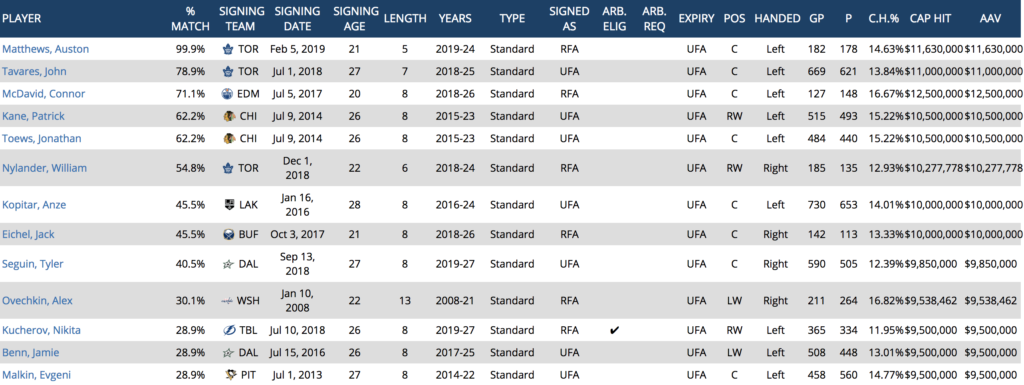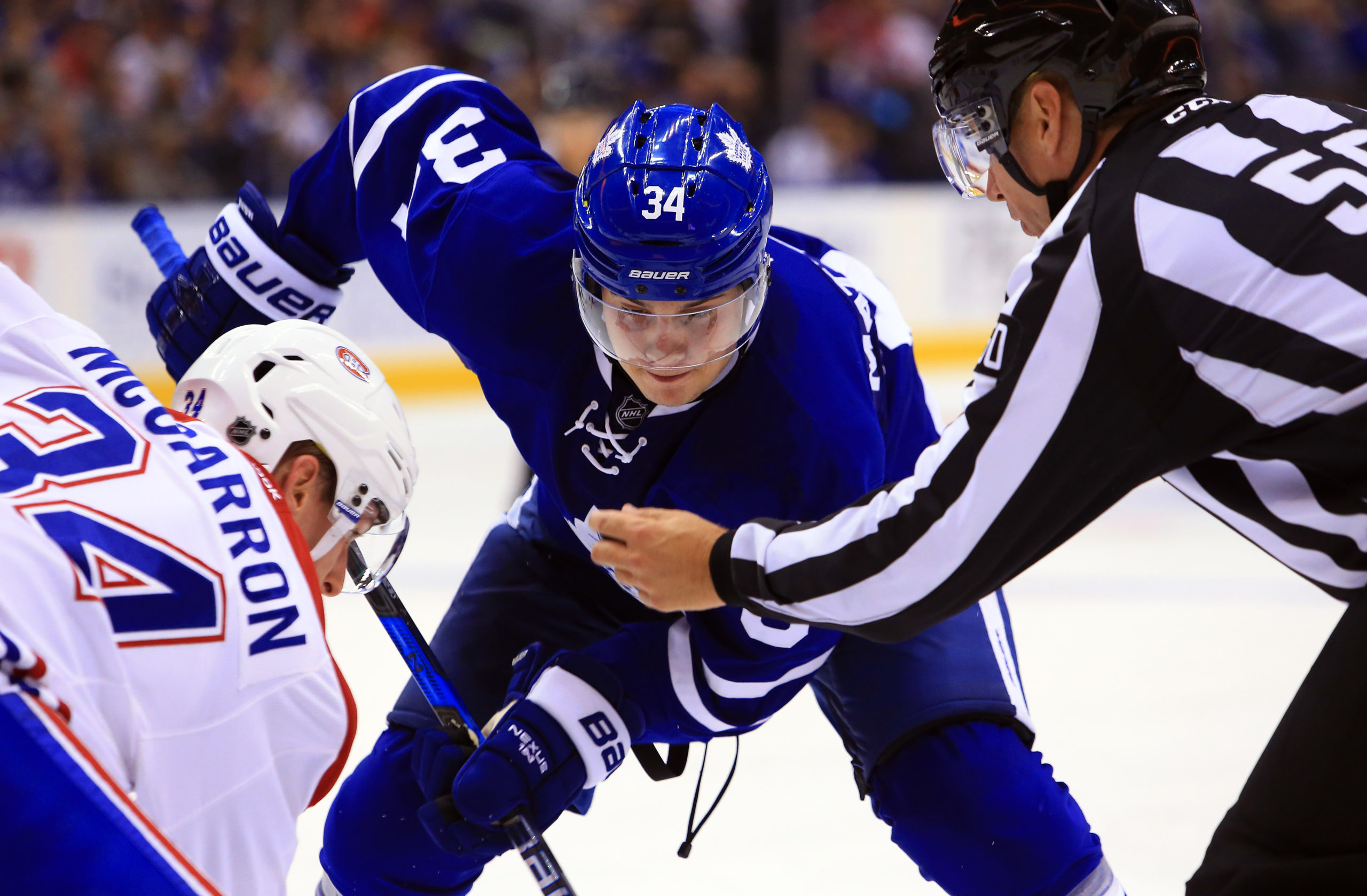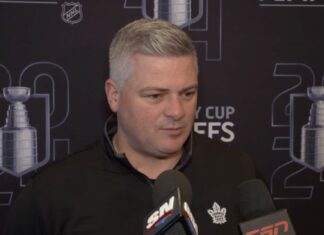There will be no discounts.
Hearing TOR and Matthews closing the extension. Will be five years, between $11.5-11.7 AAV
— Elliotte Friedman (@FriedgeHNIC) February 5, 2019
The Leafs will only buy one UFA year with this contract, as Auston Matthews will be eligible to become a UFA a few months before his 27th birthday with an opportunity to cash in huge in five years. At $11.634 million, his cap hit represents 14.6% of the current cap ceiling. In 2019-20, he’ll be the second highest paid player in the league, about $900,000 behind Connor McDavid.
Looking through medium-term deals given to stars in the past and charting out the cap percentages, only Crosby and Malkin’s five-year deals back in 2007 and 2008 (worth 17% and 15% of the cap, respectively) would exceed $11.5 million under the current cap with just the one UFA year purchased. Both had multiple 100+ point seasons, and one 110+ point season apiece, by the time they signed their second contracts; Matthews, partly due to injury, has yet to eclipse 70. The likes of Steven Stamkos’ (11.7%) and John Tavares (8.5%) came in significantly lower.

All of the above players in a similar neighbourhood cap percentage-wise are on contracts that bought up significant quantities of UFA years. Many people certainly anticipated the Leafs signing Matthews to this kind of AAV on a max eight-year term, not for five years.
Part of the issue here is that comparables are a little overblown and over-used for negotiations like this one. Lewis Gross’ quote about the Nylander negotiation contained an interesting reference to the fact that the big picture — where the player fits into the Leafs’ overall structure — was far more of a focus than specific comparables across the league:
You kind of use the macro more in arbitration than you do in a negotiation for an RFA like this. A big part of our focus was on the Leafs. Where does Willy fit in on the Leafs? Where will Willy fit in moving forward on the Leafs? We really tried to make that a focus of this negotiation.
While the Nylander contract is a different story to some degree, this is definitely the case when dealing with a superstar like Matthews. It is ultimately two sides entering a negotiation together wherein the player has significantly more leverage than the average RFA — the Leafs simply can’t trade him or even expose him to the possibility of an offer sheet.
They can’t exactly nickel and dime a negotiation with a face-of-the-franchise superstar, who, at the end of the day, there are few comparables for anyway — he’s a 6’3, 220-pound center who has a 40-goal season to his name already, was on pace for 45 last season, and is on pace for 41 in the final year of his ELC, with the bulk of his scoring coming at even strength and despite missing 13 games this year due to injury. If he breaks 40 twice, as he’s in line to do — plus one season where he was on pace to hit 45 if not for injury — on his ELC he’ll have accomplished something neither Malkin or Crosby did from a goal-scoring perspective. He’s one of the best two or three goal scorers in the league and he’s doing it from the center position. At the end of the day, how do you put a “fair market price” on a unicorn?
All of that said, while we can talk about the shifting landscape in the NHL, the impact young players are making on their ELCs, and the changing attitudes among said players and their agents about demanding fairer value relative to their contributions to the team, there are fair arguments to be made that Kyle Dubas left these critical negotiations too late in the game and may even be a little shaken up by the William Nylander experience. If the times are indeed changing vis a vis young stars getting their due, it’s a shame it’s had to start with the Leafs, and it is perhaps indicative of a GM that’s been unable to effectively articulate the club’s position in a persuasive enough way in order to secure any degree of club discount.
As Bob McKenzie showed yesterday — while we can quibble with the numbers on Andreas Johnsson and Kasperi Kapanen, which are maybe a touch low — this can work for the next five years of their Cup window if the Leafs are able to manage the cap smartly.
Here's @TSNBobMcKenzie's projected 19-20 Leafs roster. pic.twitter.com/qxRSmx4Yvs
— Platinum Seat Ghosts (@3rdPeriodSuits) February 5, 2019
It’s becoming clearer by the day, though, that the Leafs are going to have to trim any and all excess fat with a high degree of ruthless efficiency because the stars sure as hell are getting paid.




![Sheldon Keefe Post Game, Leafs 3 vs. Bruins 2: “I loved [the Matthews] line, and I loved a lot about our game all the way through the lineup” Sheldon Keefe, Toronto Maple Leafs post game](https://mapleleafshotstove.com/wp-content/uploads/2024/04/keefe-pg-game-1-218x150.jpg)


























![Sheldon Keefe Post Game, Leafs 3 vs. Bruins 2: “I loved [the Matthews] line, and I loved a lot about our game all the way through the lineup” Sheldon Keefe, Toronto Maple Leafs post game](https://mapleleafshotstove.com/wp-content/uploads/2024/04/keefe-pg-game-1-100x70.jpg)



